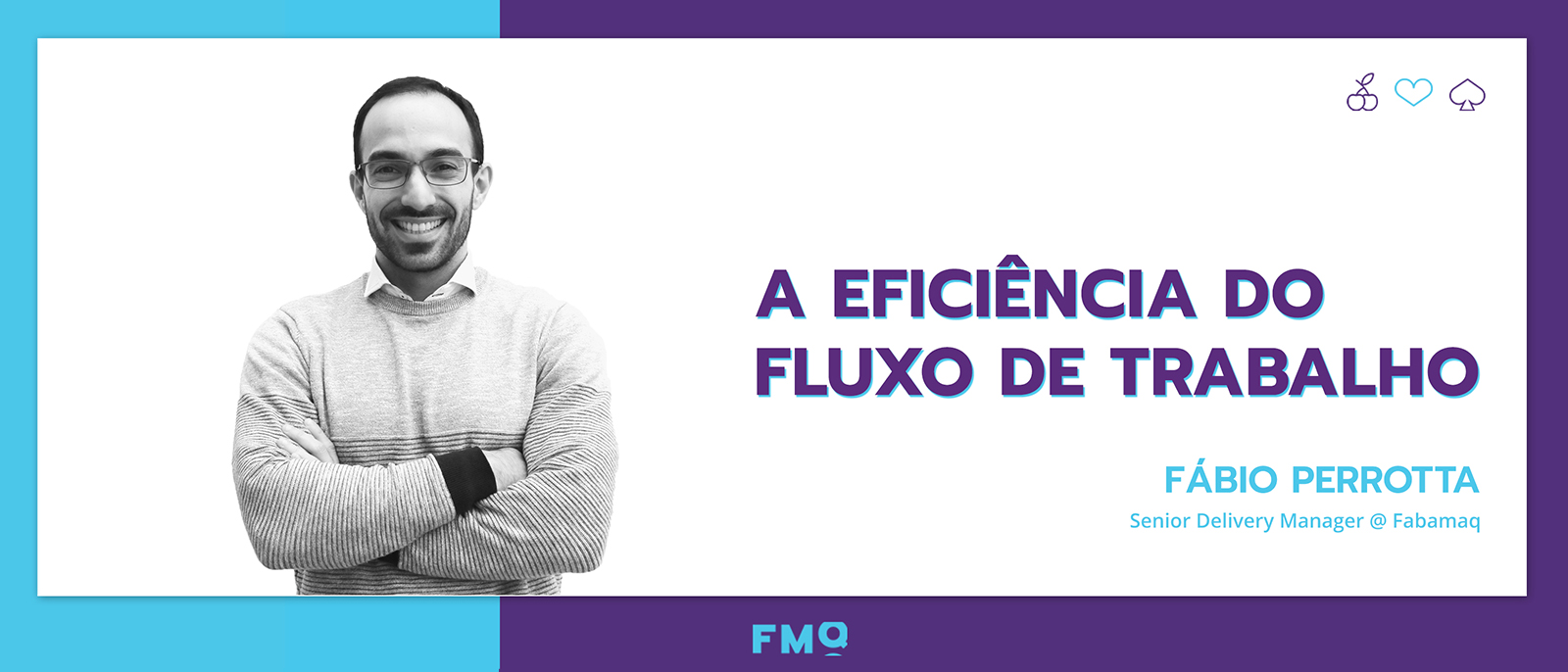Growth and (in)efficiency at work!
Start up, win your first customers, build loyalty, win new customers, and grow fast! This is the path that every business dreams of taking, but it's in the growth phase that one of the main challenges arises: workflow efficiency. This is the metric that will tell us how well organised our company's operations are and, consequently, how prepared it is to grow in scale without compromising service/product quality and time-to-market. Confused? My name is Fábio Perrotta, I'm a Delivery Manager at Fabamaq, and I want to help clear up some doubts about this concept and what it represents.
UNDERSTANDING THE WORKFLOW
 Photo by Carlos Aranda published on Unsplash. |
In a manufacturing operation we can identify a bottleneck* (see definition at the end of the article) almost immediately. Just look at some material piling up on the production line. In the digital context, invisible work can be a major disruptor of company efficiency. There are tasks that can sit untouched for weeks without anyone realising or resolving them. When the deadline approaches, the famous questions come up: why are we late? Where do we need to allocate more effort to finish faster?
As much as someone can risk a simple, straightforward answer, they probably won't give an effective response to the complex reality of the software development process. Virtual product and project activity management systems have several parallel workflows that interconnect at a certain point. Each activity flows through the steps of its workflow and it can represent anything: a user story, a feature, a sub-activity of a feature, a bug, etc.
When we think of the life cycle of an activity, we have its creation, the intermediate steps (analysis, development, validation, etc.) and its closure. As the activity moves through the flow, it usually depends on more than one person and can get stuck for different reasons (lack of information, prioritisation, over-allocation, among other possibilities). Scaling up this scenario, in which we have several different types of interdependent activities, teams and products in development, it's difficult to find a direct cause for a delivery delay.
What we can do is organise the work system so that it can easily signal which state of the flow an activity spends the most time in during its lifecycle. From there we can direct the effort towards a specific stage where there is in fact a bottleneck or a waste of energy. One of the metrics that makes analyses like this possible is Workflow Efficiency.
WHAT IS WORKFLOW EFFICIENCY AND HOW IS IT CALCULATED?
Workflow efficiency is a metric that tells us how well designed our workflow is, always focussing on the item in the flow (activity) and never on the people carrying out the work. It is calculated by considering the time the activity spends in two types of flow states: action states (effective work) and waiting states (stopped).
 Diagram explaining Lead Time by Julia Wester. |
At Fabamaq, for example, we extract the average time that activities remain in each workflow state. The value of this metric is calculated using the following formula:
Total issue time in states that represent action
(Examples of action states: In Progress, In validation, In Analysis...)
:
Total time between the issue being chosen for development and delivery
(also known as Cycle Time)
=
Workflow Efficiency
(value in %)
WHAT IS NOT WORKFLOW EFFICIENCY?
We can't consider in this metric how efficient a person is at their job. Workflow efficiency is intended to show the quality of our work system as an organisation and process. To analyse the performance of each team member, other options should be considered.
WHAT VALUE SHOULD THIS METRIC HAVE?
The market shows us a (low) workflow efficiency of around 15% as a common value. This result means that 85% of the time the task was stopped and awaiting action, a fact that conveys a reality that falls short of what is desired for any organisation.
There isn't really a good value we can set for this metric. What is really important is to monitor this indicator, see where we stand at the moment and design a valid action plan to reduce waste and optimise workflow in the short, medium and long term.
When it comes to measuring the efficiency of the company's workflow, one of three possible reactions awaits you: unpleasant shock, agreement/confirmation of expectations or pleasant surprise. In any of these scenarios, you need to know what to take into account when analysing and what you can do to improve the indicator.
WHAT SHOULD WE CHECK FOR REALISTIC DATA?
 |
In order to have a Flow Efficiency that actually reflects reality, it is important to:
1. Check that the workflow is reflecting the way work and operations are carried out in practice.
2. Check whether there is any state in the middle of the designed workflow that represents both a wait and an action.
3. Check how people are using the workflow transitions on a regular basis in the task recording platform.
WHAT CAN I DO TO IMPROVE THE RESULTS?
To finish off, I'll share three tips on what to do to improve Flow Efficiency:
1. Focus on the bottlenecks in the operation. In other words, look at the state in which the task is waiting the longest for action to explore in detail what is happening and realise the causes of the delay.
2. Limit the amount of parallel work in the system as a whole or in just one state of the flow (limit *Work In Progress). That way, before the bottleneck forms, the flow stops, and you can work on the potential problem.
3. Don't limit yourself to the flow being analysed. Think globally about the processes that could impact this flow and the stages a request goes through before it becomes an activity.
Workflow Efficiency should be reviewed periodically and used as a guide for action. This indicator is much more than a number and calls for the continuous improvement of the work that fast-growing companies like Fabamaq need to maintain their time to market without compromising or losing quality.
CONCEPTS
*Bottleneck – in the production flow, a bottleneck is a stage where more orders are received than the production chain's processing capacity. Bottlenecks generate an interruption in the flow of work and delays in the production process.
*Work In Progress (WIP) - it's the number of tasks a team currently has. This indicator shows the capacity of your team's workflow at any given time.



